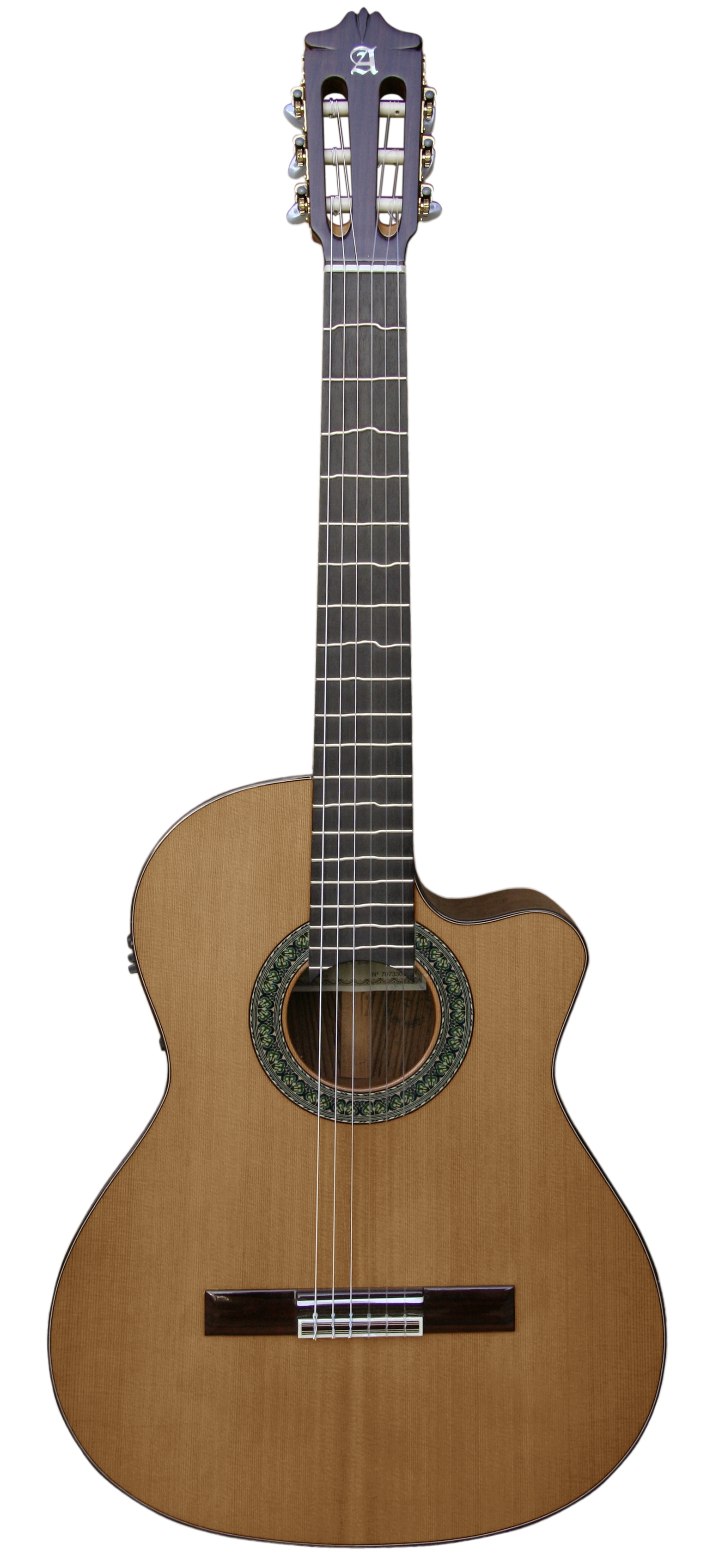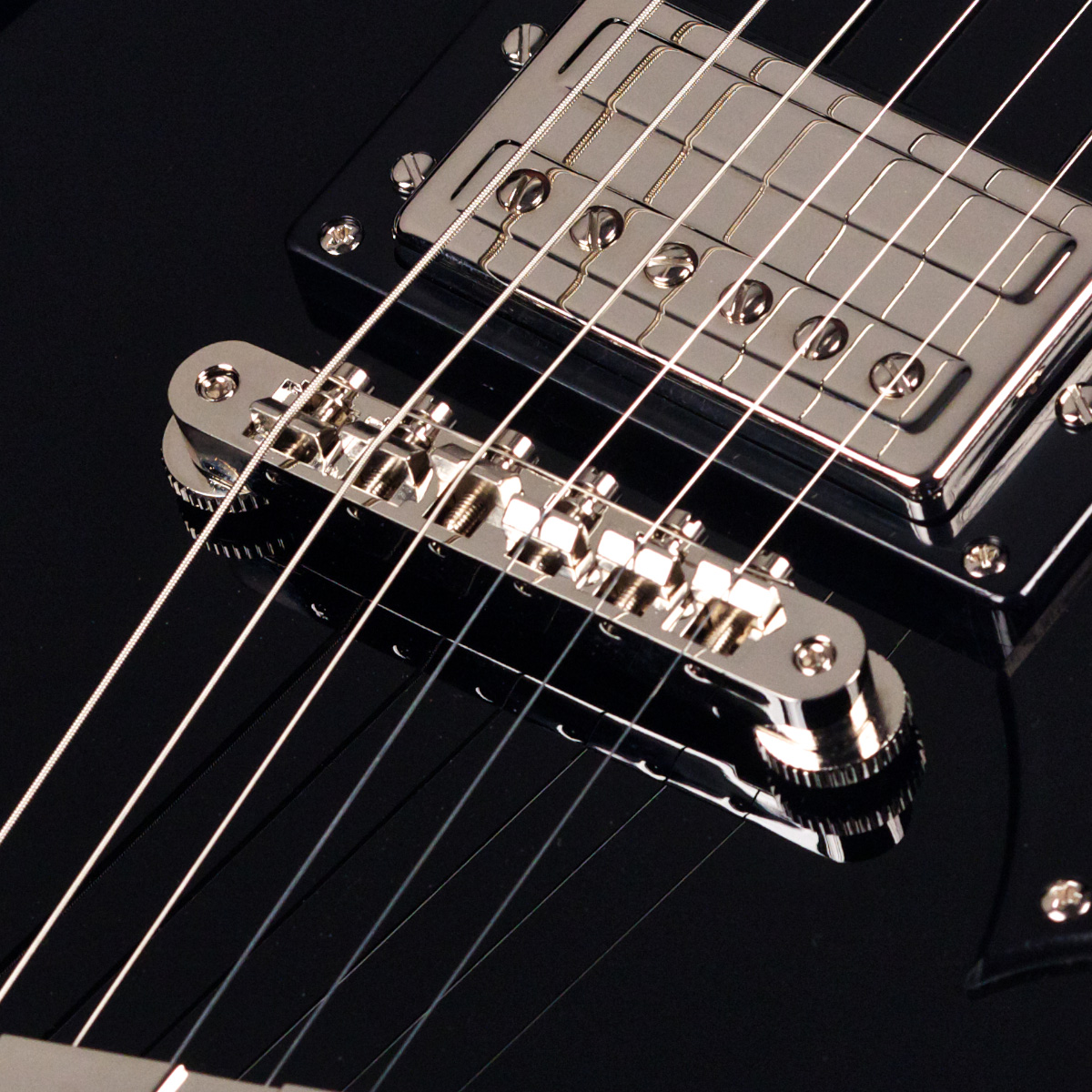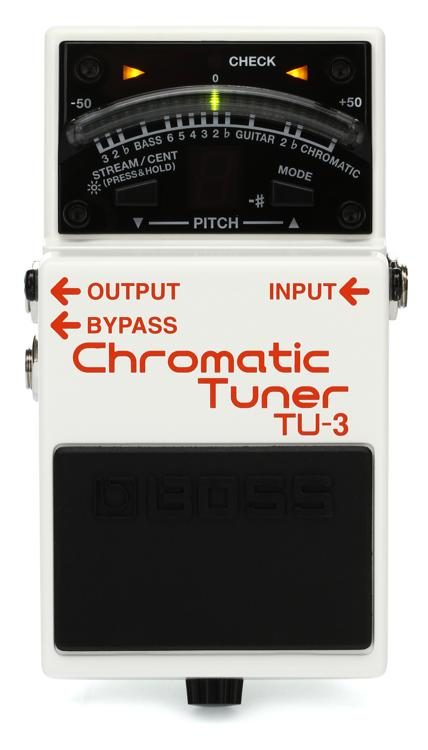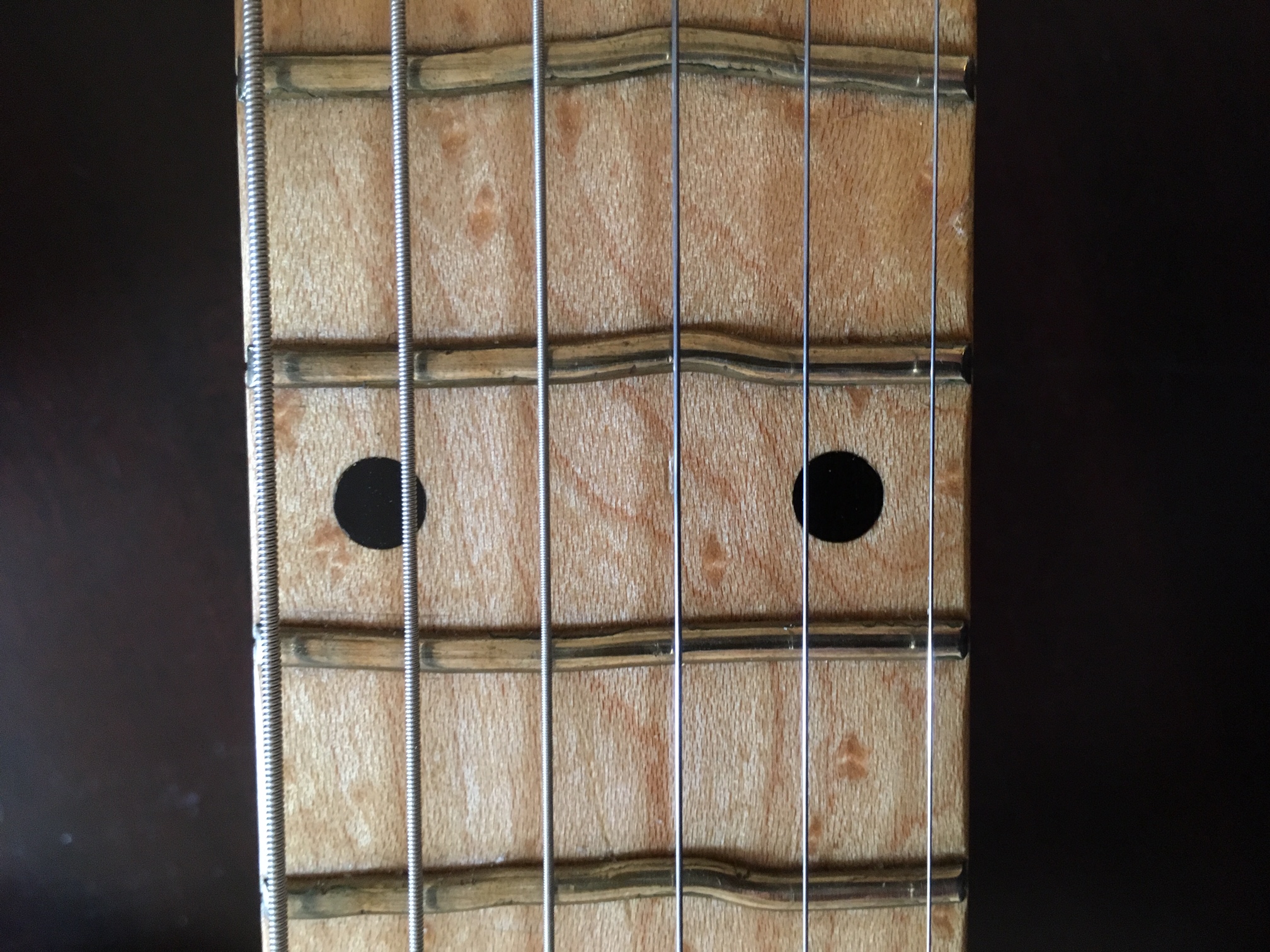FAQ
Find answers on some of the frequently asked questions that other guitar players had.
 Well, the easy answer to that question is that True Temperament™ Fretting System is a revolutionary new way to construct guitar fingerboards with Curved Frets™ which tune accurately along the whole neck. We call it Dynamic Intonation™. The Thidell Formula One temperament will give you a super-accurate intonation. All different keys works perfectly fine all over the fingerboard
Well, the easy answer to that question is that True Temperament™ Fretting System is a revolutionary new way to construct guitar fingerboards with Curved Frets™ which tune accurately along the whole neck. We call it Dynamic Intonation™. The Thidell Formula One temperament will give you a super-accurate intonation. All different keys works perfectly fine all over the fingerboard The answer to that is Yes! We currently have fret models for 6-, 7-, 8-string electric guitar, acoustic steel and nylon as well as for bass guitar. Also more advanced multiscale models and hybrid fanned fret/True Temperament.
The answer to that is Yes! We currently have fret models for 6-, 7-, 8-string electric guitar, acoustic steel and nylon as well as for bass guitar. Also more advanced multiscale models and hybrid fanned fret/True Temperament.
 There´s nothing wrong with straight frets per se, but if you want a perfect intonated guitar you should of course go for the curved TT-frets!
There´s nothing wrong with straight frets per se, but if you want a perfect intonated guitar you should of course go for the curved TT-frets!
Here´s an explanation for you: Standard equal tempered fret spacing is calculated from one single piece of information about the instrument – the scale length (the theoretical speaking length of the open strings). A divisor constant is used to determine the locations of the frets. The scale length divided by the constant gives the position of the first fret. The remaining length after subtracting the first fret, divided by the same constant, gives the position of the second fret, and so on.
The frequency of a vibrating string is determined by three factors: the speaking length, its mass, and the tension applied. All three of these factors are affected to varying degrees when a string is pressed down on a fret. Along the neck, the length and mass decrease by 50% per octave. Changing the length affects the stiffness. The tension is affected by fretting the string, as the string height is not zero. Pressing the string to the fret stretches the string slightly, increasing the tension and thus sharpening the notes produced.
The only way to fully compensate for all these parameters is to adjust each and every string-to-fret contact point on the fingerboard separately, until each and every note plays the target frequency exactly. This, which is impossible on a guitar with traditional, one-piece, straight frets, is exactly what we do with Dynamic Intonation™, and Curved Frets™.
 Not at all. The playing feel on a True Temperament guitar is not different from any other standard guitar.
Not at all. The playing feel on a True Temperament guitar is not different from any other standard guitar.
Learn more…
 No problem. Bending a string on a TT guitar does not differ from a guitar with straight frets.
No problem. Bending a string on a TT guitar does not differ from a guitar with straight frets.
Learn more…
 – No, not really. This is all about the intonation range at the bridge, for instance a Tune-o-matic bridge. A heavy string gauge combined with down tuning can end up out of intonation range.
– No, not really. This is all about the intonation range at the bridge, for instance a Tune-o-matic bridge. A heavy string gauge combined with down tuning can end up out of intonation range.
Our steel-string acoustic fingerboards (650 mm and 630 mm scale) work fine with 0,011- to 0,013-set with a wound 3d string.
For our nylon-string acoustic fingerboard (650 mm scale) you can use medium to hard tension strings. We have through the years tested a big range of string brands and noticed that plain nylon strings varies a lot in tension consistensy. We can recommend Savarez Corum strings.
 There are some very important things you need to have clear when you want to tune a TT guitar.
Learn more…
There are some very important things you need to have clear when you want to tune a TT guitar.
Learn more… Tuning the open strings – except for the A string – to an ordinary chromatic tuner will not work with a True Temperament guitar, as the open strings are not tuned in equal tempered intervals.
Tuning the open strings – except for the A string – to an ordinary chromatic tuner will not work with a True Temperament guitar, as the open strings are not tuned in equal tempered intervals.
 Just recently PST – Precision Strobe Tuner, made in USA by James Campbell – made an update which included the True Temperament tuning.
Just recently PST – Precision Strobe Tuner, made in USA by James Campbell – made an update which included the True Temperament tuning.
 Of course you can! A TT-equipped neck intonates superior to any straight fretted neck. The limitation on how low you can go before the intonation craps out is most often the (plain) 3rd string – anything thicker than a 0.018″ usually sounds horribly “plonky” at, or close to, concert pitch, but thinner ones can become too floppy (and difficult to intonate) when tuned down – and again, using a wound 3rd is not an option if you have a True Temperament neck designed for a plain 3rd string.
Of course you can! A TT-equipped neck intonates superior to any straight fretted neck. The limitation on how low you can go before the intonation craps out is most often the (plain) 3rd string – anything thicker than a 0.018″ usually sounds horribly “plonky” at, or close to, concert pitch, but thinner ones can become too floppy (and difficult to intonate) when tuned down – and again, using a wound 3rd is not an option if you have a True Temperament neck designed for a plain 3rd string.
 You do it In exactly the same way you would intonate with a standard neck – by matching the open string notes to the octave (12th fret) notes.
You do it In exactly the same way you would intonate with a standard neck – by matching the open string notes to the octave (12th fret) notes.
 True Temperament works very well with acoustic guitars; steelstringed as well as nylonstringed. Correcting intonation on an acoustic guitar is, as you know, very limited. If you want to assure yourself of an acoustic guitar that provides close to perfect intonation for every note across the fretboard you should go for the TT system.
True Temperament works very well with acoustic guitars; steelstringed as well as nylonstringed. Correcting intonation on an acoustic guitar is, as you know, very limited. If you want to assure yourself of an acoustic guitar that provides close to perfect intonation for every note across the fretboard you should go for the TT system.
We offer the Thidell Formula 1 temperament for both steel-string (wound G) and nylon-string guitars with 650 mm and 630 mm scale length.
 Yes! We offer the Thidell Formula 1 temperament for 6-, 7- and 8-string versions in 25,5” and 26,5″ scale length, and 8-string for 27″ scale.
Yes! We offer the Thidell Formula 1 temperament for 6-, 7- and 8-string versions in 25,5” and 26,5″ scale length, and 8-string for 27″ scale.
 Yes we do! These are hybrid TT/fanned frets. There are available versions for 6-, 7- and 8-string.
Yes we do! These are hybrid TT/fanned frets. There are available versions for 6-, 7- and 8-string.
 Yes it is! True Temperament works very well with bass guitars. We offer the Thidell Formula 1 temperament for 4- and 5-string 34″ scale electric bass. Will be launched late 2019.
Yes it is! True Temperament works very well with bass guitars. We offer the Thidell Formula 1 temperament for 4- and 5-string 34″ scale electric bass. Will be launched late 2019.
 Yes it´s possible to do a so called conversion which means replacing the fingerboard with a TT one, fret slot it and then fret it with TT-frets.
Yes it´s possible to do a so called conversion which means replacing the fingerboard with a TT one, fret slot it and then fret it with TT-frets.
Can be done by a skilled luthier at your True Temperament Service point.
 It works just fine together with “ordinary” instruments. The offsets from Equal Temper are not so severe that they create any dissonance whatsoever.
It works just fine together with “ordinary” instruments. The offsets from Equal Temper are not so severe that they create any dissonance whatsoever.
 It works just fine together with “ordinary” instruments. The offsets from Equal Temper are not so severe that they create any dissonance whatsoever.
It works just fine together with “ordinary” instruments. The offsets from Equal Temper are not so severe that they create any dissonance whatsoever. You do it In exactly the same way you would intonate with a standard neck – by matching the open string notes to the octave (12th fret) notes.
You do it In exactly the same way you would intonate with a standard neck – by matching the open string notes to the octave (12th fret) notes. Of course you can! A TT-equipped neck intonates superior to any straight fretted neck. You can tune down within sensible limits. The limitation on how low you can go before the intonation craps out depends on the string gauge. Thinner ones can become too floppy and difficult to intonate when tuned down.
Of course you can! A TT-equipped neck intonates superior to any straight fretted neck. You can tune down within sensible limits. The limitation on how low you can go before the intonation craps out depends on the string gauge. Thinner ones can become too floppy and difficult to intonate when tuned down. We recommend the programmable strobe tuner
We recommend the programmable strobe tuner  Tuning the open strings – except for the A string – to an ordinary chromatic tuner will not work with a True Temperament guitar, as the open strings are not tuned in equal tempered intervals.
Tuning the open strings – except for the A string – to an ordinary chromatic tuner will not work with a True Temperament guitar, as the open strings are not tuned in equal tempered intervals. There are some important things you need to have clear when you tune a TT guitar. For instance tuning the open strings – except for the A string – to an ordinary chromatic tuner will not work with a True Temperament guitar, as the open strings are not tuned in equal tempered intervals.
There are some important things you need to have clear when you tune a TT guitar. For instance tuning the open strings – except for the A string – to an ordinary chromatic tuner will not work with a True Temperament guitar, as the open strings are not tuned in equal tempered intervals.